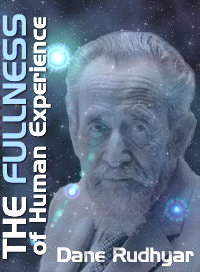 |
| Home | Bio | Art | Music | Literature | Civilization & Culture | Philosophy of Wholeness | Theosophy & Spirituality | Astrology |

CHAPTER TWO
Wholeness and the Experience of Periodic Change - 4 Objective time, causality, and the measure of time The foregoing discussion dealt with the experience of subjective beings who have desires (or at the biological level, vital needs) and seek satisfaction of them in and through situations able to provide it. This satisfaction has two basic features: the process of fulfillment "takes time," and it usually involves the concept of causation — a definite sequence of cause-and-effect, the effect being the cause of further effects. If the principle of causality as it is usually understood today is to be taken as universally true, the categories of "before" and "after" are also to be given an absolute character. A cause occurs before its effect. It occurs in what has ambiguously been called "linear" time. A particular cause, believed to be past or present, can be expected to produce a definable future effect. Thus interpreted, a series of experienced situations assumes an objective character. Objectivity, however, refers to the fact that a relation between the experiencing organism and another entity occupies the mind's attention. A subjective experience, on the other hand, refers to the change directly affecting a whole organism and its centralizing consciousness. When a person is burned by a hot stove in the dark, there is in the experience itself no immediate realization of the stove as a source of heat. However, the mind is called upon to establish both the existence of a hot stove and the precise character of the gesture which brought about the relation between the hand and the stove. Relation generates objectivity. The world around us is objective only because we relate to its many components. Therefore what is involved in giving objectivity to time — and in a similar sense, to space — is the fact that when consciousness is dominated by mental processes, it deals primarily with relations rather than with experienced changes (events) in themselves. Objective time refers to the succession of changing relations; objective space, to a complex group of "positions" occupied by entities with which a human being can, conceptually if not actually and experienceably, relate himself in terms of measurable "distance" (proximity or remoteness). Whether we refer to objective time or dimensional space we are dealing with a substratum of relatedness; that is, with an abstract factor or principle of existence without which there could be no experienced relation. Within this substratum, events occupy positions. The substratum — whether it be space or time, or today in science space-time — contains time-sequences and/or space-positions; but in either case the relations between experienced events and entities are at least partially determined by their distance (in spatial terms) and by the before-and-after succession (in terms of time sequence). Space and time are assumed to be empty containers. As spatial and temporal entities move within the containers, the relations between these entities change; but space and time remain a theoretically infinite possibility of relation. Whether the human mind sees this space and time filled with events or apparently empty, in either case they are abstractions. Their only meaning is as frames of reference which make measurements possible. If, however, there is an infinite possibility of relations, two of the basic concepts of Western science and of "commonsense" human knowledge, namely, causation and gravitation, may turn out to be neither sacrosanct nor theoretically unchallengeable. Time-sequence may not follow only one cause-and-effect line. The sense of position in time natural for human consciousness may be superseded not only by a much more inclusive fan-like unfoldment of effects, but even by the transformation of the before-and-after sequence. Causation is, of course, an experience common to all human beings; yet today the mind claims the ability to imagine time-sequences not subject to the cause-and-effect (or even before-and-after) sequence, as well as space-relations between masses which would not obey gravitation. In a gravitation-free universe, the concept of physically measurable distance would not be a determining factor in controlling the motion of spatially-determined entities. If we think of a measurable space between entities, or of measurable time between the emergence of a desire and its satisfaction, we have to give space and time a definitely objective reality. This reality can only have an altogether abstract character, difficult to understand and impossible to experience. It is a construct of the mind which may reveal the natural way for the human mind to operate at this stage of the planet's evolution. The activities of human beings seemingly require such an abstract frame of reference in which events occur and physical masses are located. Events and material objects must have positions in space and time, for with-out positions there can be no way of measuring when and where to act Without one-directional causation sequence (before-and-after), commonsense daily expectability and the scientific prediction of events would be impossible. Such an impossibility would deny any meaning to human efforts at transformation and to moral values, since any act might cause any reaction. For the mind to assume the reality of such a non-ordered situation would be in fact suicidal. Such an assumption would separate mental processes from the experience of being as an integrated whole in a consistently organized structure of situations to which a meaning can be given. This is in fact only possible through the use of words and relations between words divorced from experienceable reality. By permission of Leyla Rudhyar Hill Copyright © 1986 by Leyla Rudhyar Hill All Rights Reserved.  Web design and all data, text and graphics appearing on this site are protected by US and International Copyright and are not to be reproduced, distributed, circulated, offered for sale, or given away, in any form, by any means, electronic or conventional. See Notices for full copyright statement and conditions of use. Web design copyright © 2000-2004 by Michael R. Meyer. All Rights Reserved. |
 |
